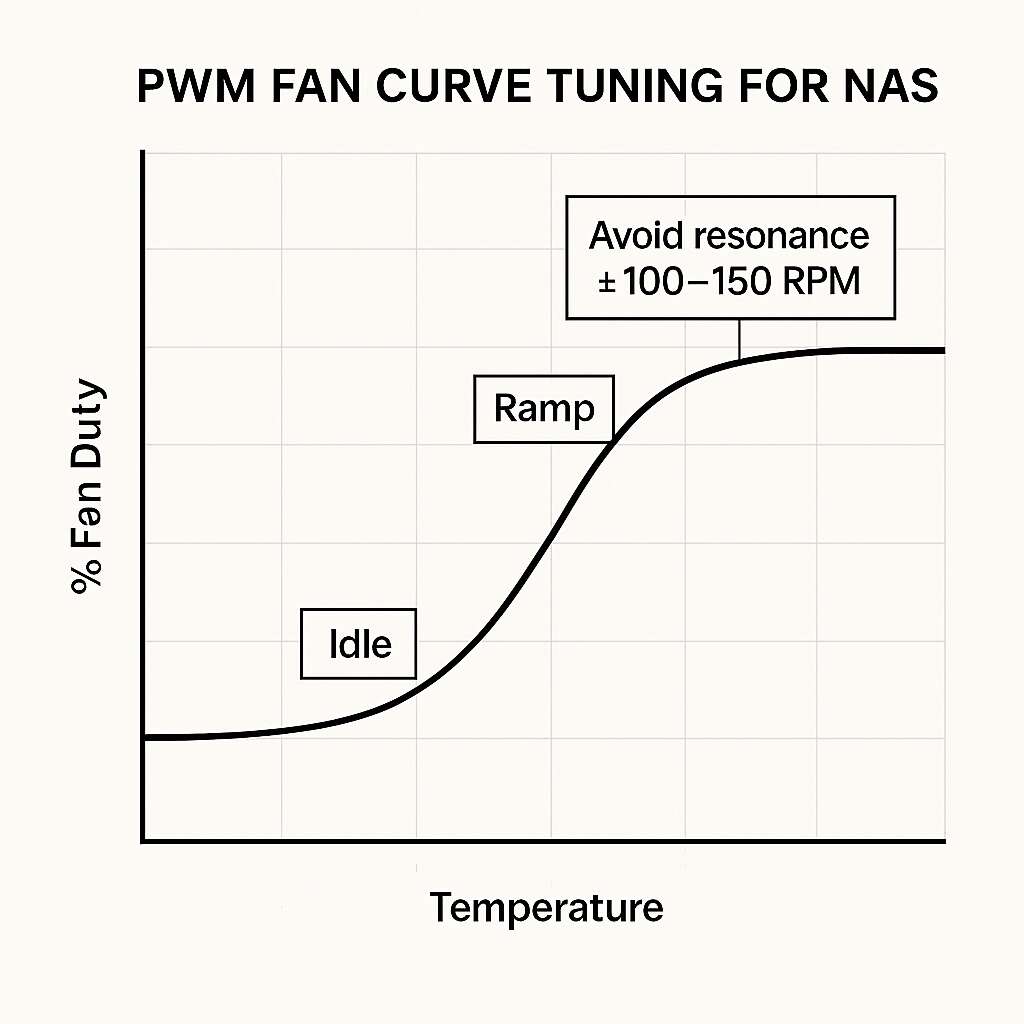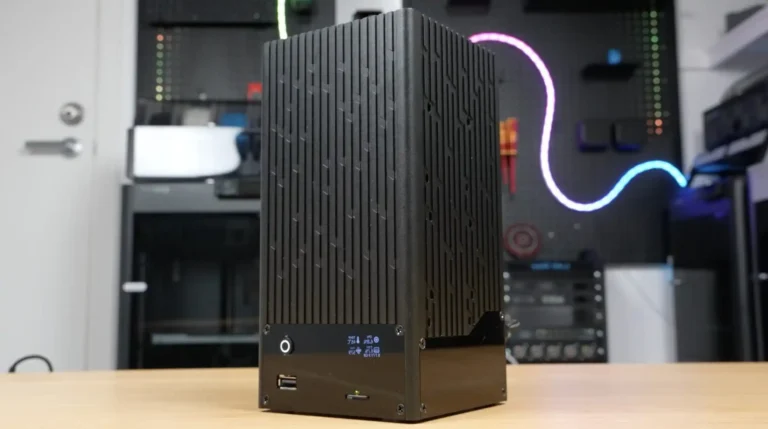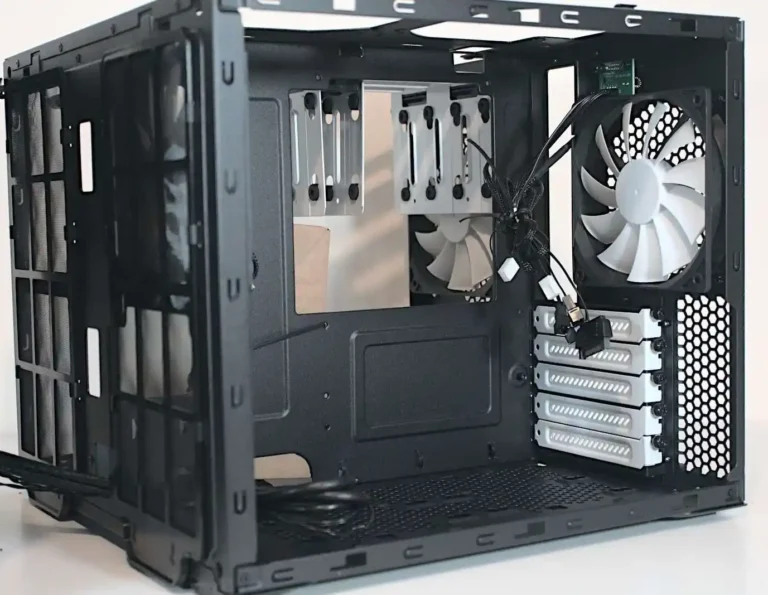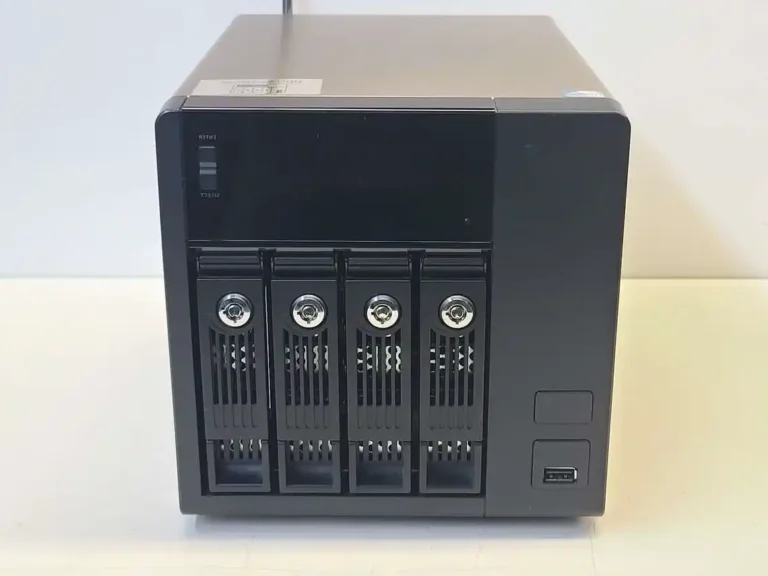Pretende que o seu NAS faça um zumbido, não um uivo. Os ganhos mais rápidos são simples: mover o ar silenciosamente e eliminar a vibração antes que ela atinja os painéis. Abaixo está um guia prático e prático - construído em torno de escolhas reais de hardware e truques de instalação - além de uma tabela rápida que você pode usar hoje mesmo. Também indicarei o equipamento IStoneCase onde for útil (OEM/ODM, volume, tudo).
Ventoinhas NAS silenciosas (PWM, pressão estática, diâmetro maior)
As ventoinhas maiores giram mais devagar para o mesmo caudal de ar. Rotação mais lenta = menor tom de passagem das pás e menos ruído. Utilizar PWM para poder moldar uma rampa suave em vez de um dente de serra ligado/desligado.
Faz isto:
- Em forma 120/140 mm ventoinhas onde o seu chassis o permitir; prefira pressão estática modelos atrás de gaiolas de acionamento densas.
- Executar um curva PWM plana até às temperaturas de condução típicas, depois uma rampa suave - sem precipícios.
- Vedar as fugas de ar (espaços em branco PCIe abertos, ilhós não utilizados) para que o ar passe efetivamente através das unidades.
Porque é que funciona: a velocidade mais baixa da ponta reduz a turbulência; as pás centradas na pressão empurram o ar através dos caddies sem a inclinação do “secador de cabelo”. Não é magia, é física.
Está à procura de um chassis que já se adapte bem a ventoinhas maiores e mais lentas? Comece com um caixa de pc para rack de servidor e obterá um fluxo de ar direto da frente para trás e paredes de ventoinha sãs.
Curva de ventoinha PWM para chassis NAS
- Em ralenti: manter as ventoinhas um pouco acima do ponto de paragem para que os rolamentos fiquem satisfeitos.
- Carga de trabalho: aumente suavemente com os tempos do disco; não corra atrás de cada °C.
- Verificação de sanidade: se uma curva fizer toda a caixa cantar, encontrou uma ressonância. Altera as RPM ±100-150 e volta a testar. Sim, às vezes é assim tão estúpido.
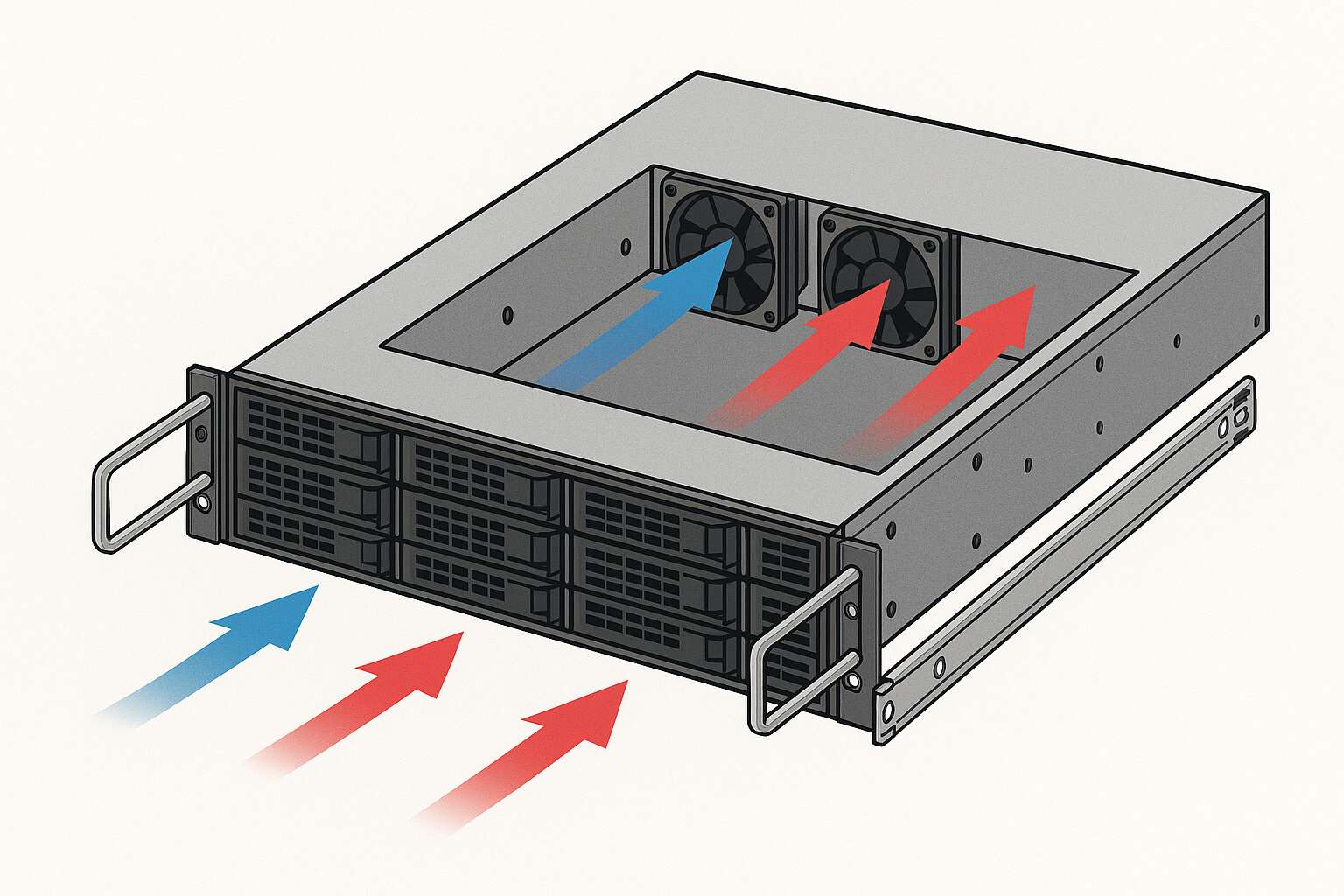
Anti-vibração para chassis NAS: Anilhas para HDD e suportes macios para ventoinhas
Os discos rígidos são pequenos agitadores. Se os aparafusarmos metal com metal, os painéis transformam-se em altifalantes.
Faz isto:
- Utilizar caddies com ilhós de desacoplamento ou inserções elásticas.
- Montar ventiladores em mensagens suaves ou armações de silicone; apertadas mas não demasiado.
- Adicionar Almofadas PSU para que a alimentação não esteja a telegrafar o zumbido para a estrutura.
Porque é que funciona: está a quebrar o caminho da estrutura. Menos energia no enquadramento significa menos vibração de “secretária que actua como um subwoofer”.
Se estiver a comprar tabuleiros ou pretender compartimentos pré-desacoplados, consulte a IStoneCase Caso NAS opções (4 compartimentos até 12 compartimentos) e hardware de montagem suave especificado no PO. O OEM/ODM existe por uma razão.
Afinação do fluxo de ar num caixa de pc para rack de servidor
As cremalheiras gostam de caminhos rectos. Puxe o ar frio para dentro, empurre o ar quente para fora, não o deixe rodar.
Dicas testadas no terreno:
- Pressão de estágio: entradas lentas de 120 mm alimentando médios ligeiramente mais rápidos atrás da parede de acionamento.
- Manter os feixes de cabos apertados e fora da sombra da admissão.
- Utilize calhas que não façam barulho e mantenha o chassis direito. Carris desleixados = cidade dos zumbidos.
A IStoneCase tem kits de calhas dimensionados para profundidades comuns; consulte calha de guia do chassis para acabar com o “ruído da gaveta” e fazer com que o serviço não seja um incómodo.
Opções de condução e um caixa do servidor atx disposição
Sim, as RPM do disco são importantes. As unidades de massa de RPM mais baixas são normalmente mais calmas para o ouvido, especialmente num armário quente. Mas a disposição faz mais:
- Num caixa do servidor atx é possível separar as zonas quentes, instalar entradas de ar maiores e manter os cabos afastados do vento.
- Deixar um dedo de espaço atrás dos backplanes; dar aos conectores um caminho de pressão limpo.
- Se fizer cache com SSDs, corta as rajadas de pesquisa aleatórias (aquele barulho de clique) quando os clientes martelam ficheiros pequenos.
Os espaçosos layouts 4U da IStoneCase também facilitam os ajustes futuros - bandeja de ventoinha extra, troca de CRPS, redireccionamento de HBA.
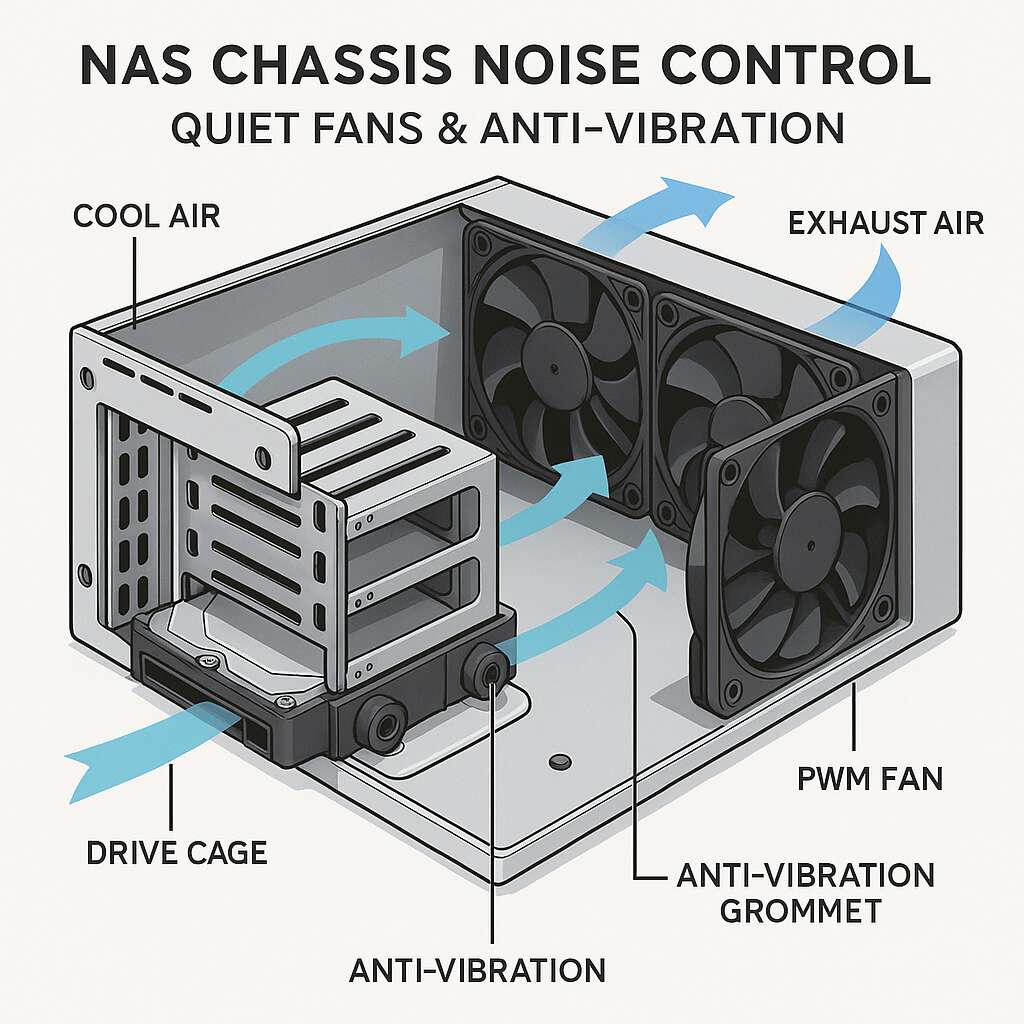
Colocação e isolamento num caixa de computador servidor construir
Mesmo uma caixa silenciosa fica barulhenta se a secretária se transformar numa mesa de som.
- Colocar o NAS em funcionamento pés macios ou uma almofada de espuma densa; evite as prateleiras de vidro (fazem barulho).
- Não o prenda num armário selado; vai fazer disparar as RPM da ventoinha e perder o silêncio que acabou de pagar em tempo e peças.
- Nota lateral: a caixa de computador servidor com uma base sólida e uma estrutura mais pesada, resiste melhor à vibração do painel do que as caixas finas e flexíveis.
Lista de controlo do comprador para um caixa para pc de servidor (ganhos rápidos, menos drama)
Quando estiver a especificar um novo chassis, execute esta lista de tarefas:
- Fluxo de ar frontal para trás com um ventilador de parede reto por detrás das baías
- 120/140 mm posições onde é importante; filtragem de poeiras sensível
- Conduzir caddies com ilhós; o ventilador é montado com mensagens suaves
- Cabeçalho da ventoinha PWM acesso (ou um controlador integrado)
- Canais de cabos limpos; sem esparguete a bloquear a entrada
- Carris que se adaptam à sua profundidade sem choques nas extremidades
- Opções OEM/ODM se necessitar de tabuleiros de ventoinha ou deflectores estranhos
Procurar as famílias IStoneCase para assinalar as caixas: caixa para pc de servidor, caixa de pc para rack de servidor, compacto Caixa ITX para nós de borda, mais Caso do servidor GPU se o seu NAS funcionar como um nó de arranque AI.
Cenários do mundo real (o que fazer, rapidamente)
- Prateleira para escritório em casa: faz zumbir através de contraplacado; adicione pés macios, reduza as RPM ao ralenti com uma curva PWM suave e rode a caixa para que a admissão não beije a parede.
- JBOD de bancada de laboratório: mistura de placas de rede rápidas e discos quentes; fluxo de ar dividido - 120 mm mais lento à frente, médios ligeiramente mais rápidos atrás da caixa - e desacoplamento da PSU.
- Armário de bordos: rack curto com um interrutor acima do NAS; use um caixa de pc para rack de servidor e calhas, manter os cabos arrumados para que não cantem na corrente de ar.
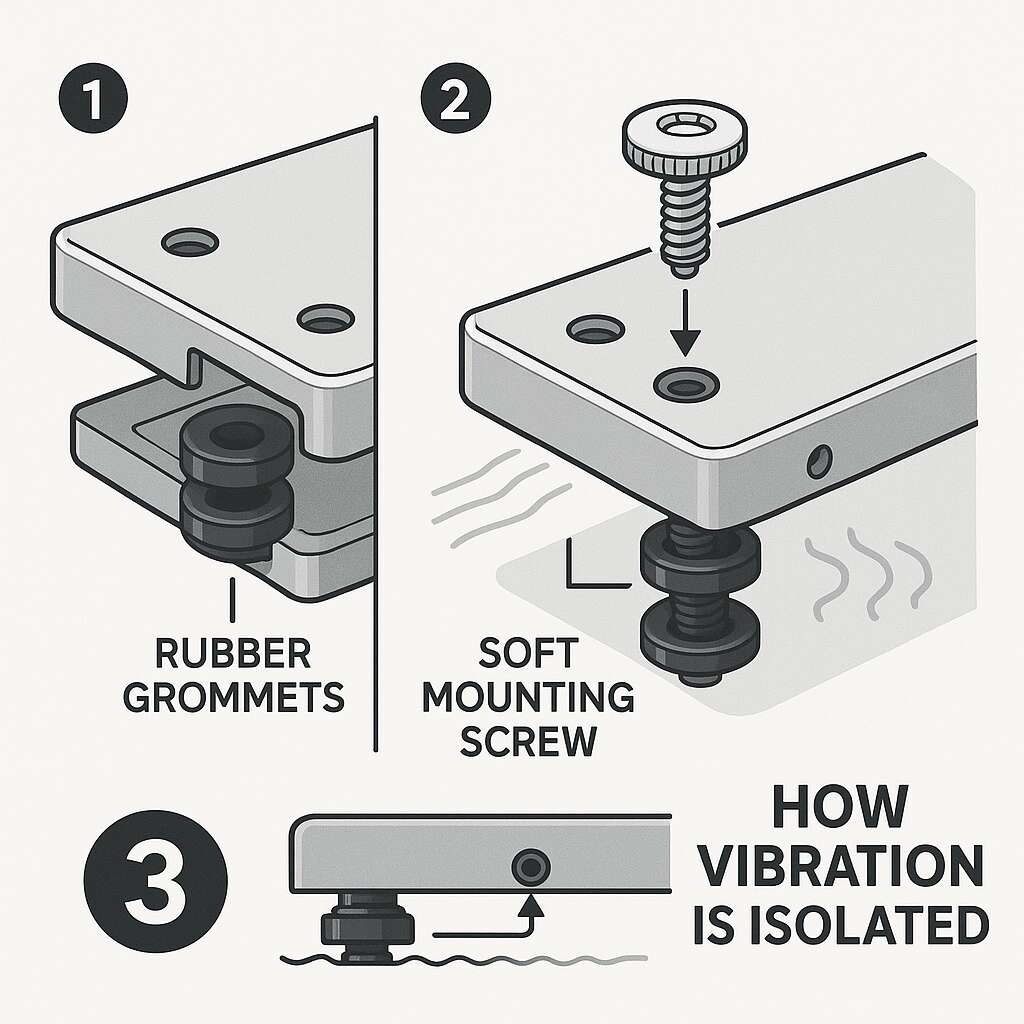
Referência rápida - lista de verificação do controlo de ruído (chassis NAS)
| Alterar | Efeito esperado no ruído | Onde se candidatar | Porque é que funciona | Notas |
|---|---|---|---|---|
| Troca para ventoinhas PWM de 120/140 mm | Major ↓ em vazio/baixa carga | Entrada frontal, parede central do ventilador | Menor velocidade da ponta, pressão mais suave | Utilizar modelos de pressão estática atrás de gaiolas densas |
| Adicionar ilhós para HDD / tabuleiros desacoplados | Grande ↓ em “brrrr” de baixa frequência” | Todos os compartimentos de disco | Quebra a trajetória da estrutura | Não aperte demasiado; deixe a borracha fazer o trabalho |
| Suportes suaves para ventiladores (postes de silicone) | Médio ↓ ressonância tonal | Todas as posições do ventilador | Corta o acoplamento do quadro | Verificar o espaço livre para que as lâminas não beijem o grelhador |
| Selar as fugas de ar (espaços em branco PCI, lacunas) | Médio ↓ RPM da ventoinha às mesmas temperaturas | Em todo o lado | Força o ar através dos discos, não à volta | Fita adesiva, espuma ou espaços em branco adequados - não importa |
| Endireitar os caminhos dos cabos | Pequeno-Médio ↓ whoosh/whine | Em frente do muro de entrada | Elimina a turbulência | Velcro e não fechos de correr à volta dos sensores, por favor |
| Carris com ajuste confortável | Pequeno ↓ chocalhos | Implantações em rack | Mantém o chassis quadrado/silencioso | Ver IStoneCase calha de guia do chassis opções |
| Cache SSD para metadados/pequena IO | Percebida ↓ procurar conversa | Cargas de trabalho mistas | Menos pesquisas aleatórias | Emparelhar com uma política inteligente de spin-down |
| Base mais pesada / pés macios | Médio ↓ ressonância da secretária | Estantes de secretária e de parede | Isolados de mobiliário | Evitar as prateleiras de vidro (fazem muito barulho) |
Fonte: Especificações dos produtos IStoneCase, notas de instalação e configurações no terreno nas linhas de montagem em bastidor, NAS e ITX.
Porque é que o IStoneCase se adequa a este objetivo (e poupa trabalho)
IStoneCase-O fabricante líder mundial de soluções OEM/ODM para gabinetes de GPU/servidores e chassis de armazenamento-constrói caixas que são fáceis de manter silenciosas: fluxo de ar reto, estruturas robustas, colocação sensata das ventoinhas e tabuleiros que não fazem barulho. Mais importante ainda, se necessitar de ajustes (tabuleiros de ventoinhas, feixes de cabos, planos traseiros CRPS, deflectores estranhos), a equipa OEM/ODM torná-los-á reais para que o seu caixa para pc de servidor navios corretos à primeira. Não quer ter de lutar contra a acústica depois de entrar em funcionamento, acredite em mim.

